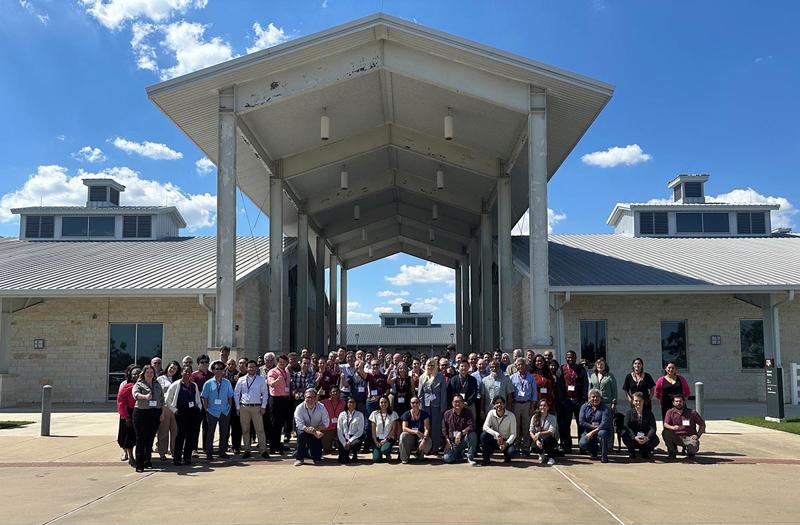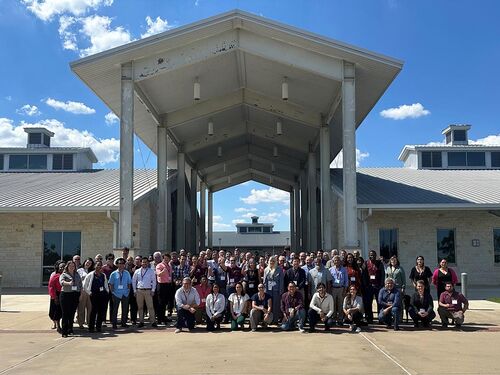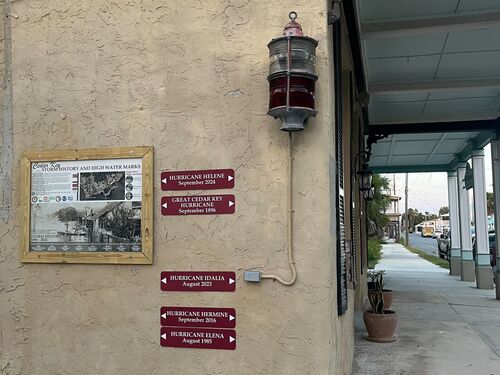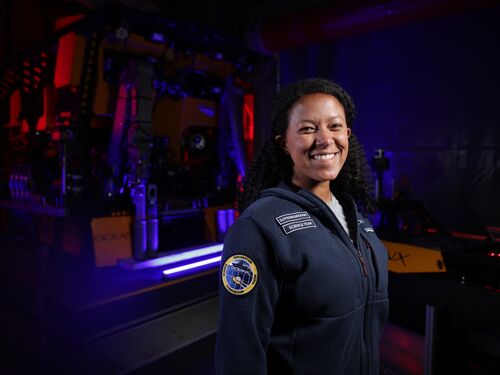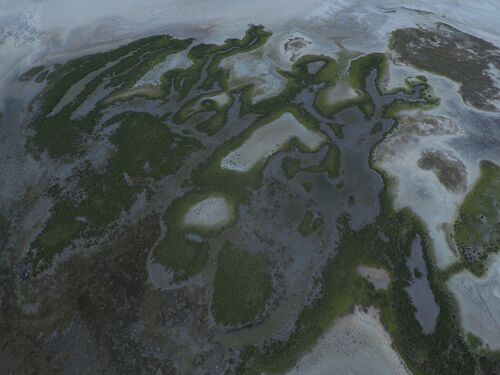Understanding Gulf Ocean Systems Initiative Marks 10,000 Profiles of the Loop Current
Program News
By Maeghan Klinker
Last update April 7, 2025
Investments supported by the Gulf Research Program (GRP) of the National Academies of Sciences, Engineering, and Medicine are transforming our knowledge of the Loop Current, the dominant physical oceanographic process in the Gulf of America, known internationally as the Gulf of Mexico. Thanks to GRP’s Understanding Gulf Ocean Systems (UGOS) initiative, the Gulf is now one of the most intensively sampled bodies of water in the world, providing the foundation for improved decision-making related to weather events and offshore energy production.
Dr. Amy Bower, who recently received the Henry Stommel Research Medal — the highest award the American Meteorological Society bestows upon an oceanographer — is a UGOS project director and a member of the National Academies’ Ocean Studies Board. Her UGOS project uses subsurface observations collected from profiling floats and mooring arrays to improve Loop Current forecasts.
“Given the Gulf’s ever-evolving currents and influence on tropical cyclones, maintaining a fleet of profiling floats is important for improving forecast models of the currents and tropical storms,” Bower noted. UGOS recently marked a major milestone in collecting 10,000 profiles gathered from 53 autonomous floats, contributing to a significant enhancement in the understanding of Gulf region ocean dynamics. These autonomous floats drift with deep ocean currents, capturing a series of profiles noting temperature and salinity as they cycle between the deep ocean and the surface.
The captured temperature and salinity profiles can then be used to improve models predicting the movement of the powerful Loop Current and its associated eddies and how they may influence other systems, such as hurricane intensification.
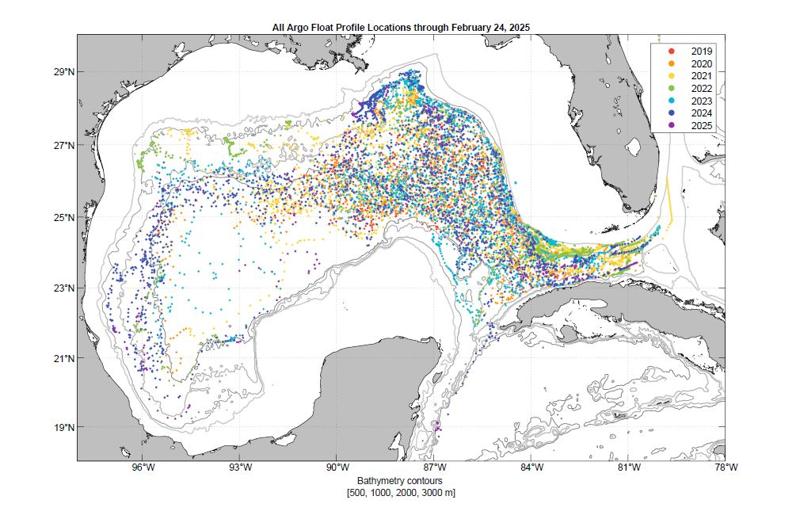
This data set has significantly increased the total number of subsurface temperature and salinity profiles ever collected in the Gulf. Since hurricanes in this region are energized by the warm Gulf waters, the new temperature profiles are contributing to real-time estimates of ocean heat content and better hurricane forecasts. The profiles are also being used to validate model predictions of the Loop Current and its eddies, which can have major impacts on the offshore energy industry. Image courtesy of Woods Hole Oceanographic Institute.
According to Bower, the temperature and salinity profiles gathered through the UGOS initiative have greatly transformed the data landscape for the Gulf region. “As a result of the deployment of the 53 UGOS-funded profiling floats, the Gulf has become one of the most densely sampled regions in the global ocean,” Bower said.
Deep ocean currents, though seemingly distant from day-to-day life for many people, have far-reaching effects. They can contribute to hurricane intensification, impact operational safety for the offshore energy industry, and increase the spread of oil during an oil spill. Having access to reliable and accurate forecasting of these deep ocean dynamics can help us prevent disasters and improve resilience.
The Loop Current moves large, deep masses of warmer water and strong currents northward from the Yucatán Channel through the Florida Straits. However, the position of the Loop Current varies greatly and occasionally an eddy sheds from the main formation and slowly migrates westward, bringing with it warm water and strong currents. This warm water causes hurricanes to intensify as they move over it. When Hurricane Katrina moved into the Gulf, it intensified from a Category 3 storm to a Category 5 storm while it traversed the Loop Current for just one day.
A 2018 National Academies consensus study report emphasized the importance of filling critical knowledge gaps to better predict the movements of the Loop Current and its eddies. The report highlights that improved forecasting capabilities are essential to providing accurate information for offshore energy operations, disaster response, marine resource management, and tropical cyclone forecasting.
In response to this need, the Gulf Research Program funded the UGOS initiative to improve understanding and forecasting of the region’s ocean dynamics. Bringing together more than 100 researchers from 30 organizations, UGOS has made a lasting impact on the Gulf region by increasing our understanding of the Loop Current and its eddies, furthering the models used for informed decision-making in relation to weather events and offshore energy production.
